
After the reconquest of Sevilla in 1248 the city's Almohad mosque became a catholic cathedral. The next two centuries
saw many changes to "christianize" the interior of the Muslim building.
Over the years Sevilla became very wealthy and in 1434 constructions
started for a huge gothic church.
When the
Sevilla Cathedral was finally completed in 1506, it surpassed the
Hagia
Sophia as the world's largest cathedral.
Some elements of the old mosque remain, notably the ablution courtyard and
la Giralda,
a minaret turned into bell tower.
Inside the cathedral are 80 chapels, of which the Capilla Real is the most
important one.
The Cathedral is the present resting place of Columbus, who brought tremendous wealth to Sevilla. In
1898 his remains were brought to Sevilla from Havana after Spain lost control over Cuba.
From the Giralda bell tower there are
fantastic panoramas of Sevilla.
We visited Sevilla Cathedral and la Giralda on a sunny day in May 2019.



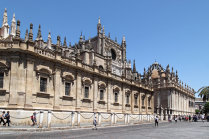

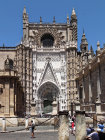
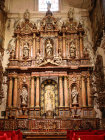
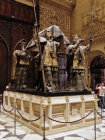
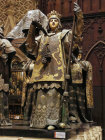
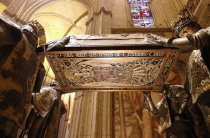
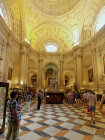
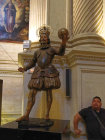
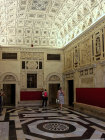
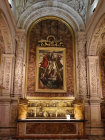
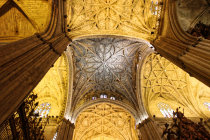
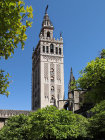
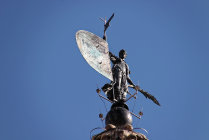
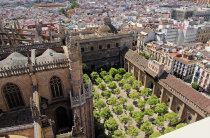
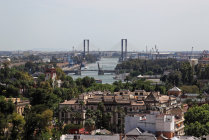
the ceiling above the main vault
the Sacrista Mayor houses the treasury. Note the nice three dimensional floor
the coffin of Columbus is carried by the kings of Spain's 4 old regions
the antechamber of the chapter house
the altarpiece in the Capilla Virgen de la Antigua
the main door is called the Door of Assumption
from la Giralda you have a good view of the orange trees in the ablution courtyard
the huge windvane is called El Giraldillo and stands 7 meters high
la Giralda was built as a minaret but is now the bell tower
his remains have traveled from Spain to Santa Domingo to Havana and then back to Sevilla


the south-east facade of Sevilla Cathedral




even in early May it is hot, so any shade provided by the cathedral is welcome


















the sculpture of Ferdinand III who took Sevilla from the Moors





















further away the Centennial Bridge dominates the view



the Descent was painted in 1547 by Flemish artist Pieter de Kempeneer



































































